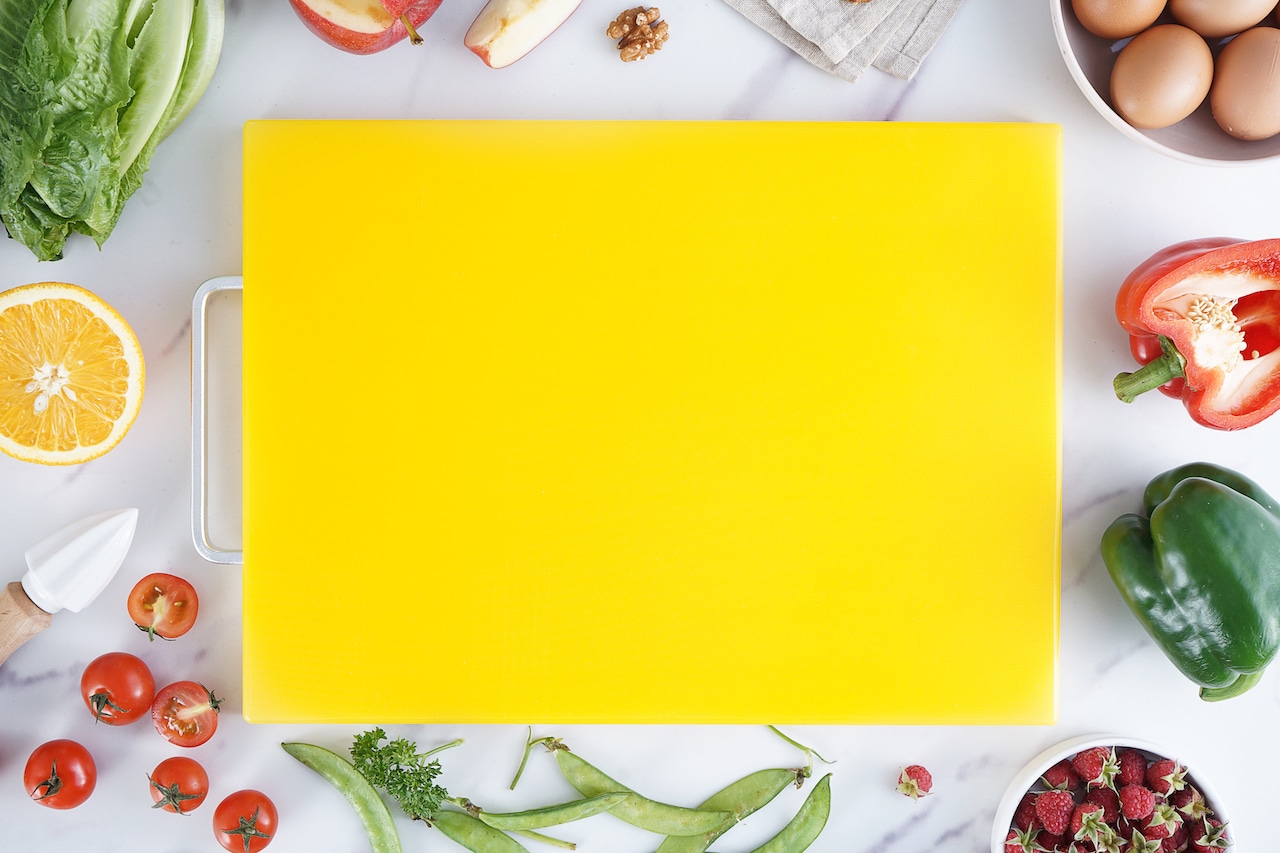The short answer is yes, plastic cutting boards, like other cutting boards, can harbor bacteria on the surface. But before you go around throwing away your plastic cutting boards, there is plenty of science that goes into this pronouncement, so you need to read everything on this blog post first before making any decision.
Plastic Boards vs. Wooden Boards
Both plastic and wooden cutting boards have been scientifically proven to harbor bacteria on the surface. Research published in the Journal of Food Protection showed that virgin wood surfaces and virgin plastic surfaces are susceptible to bacterial growth. The study revealed many things that manufacturers don’t tell us about wooden cutting boards, for example. According to the study, wooden cutting boards in their dry and wet states are two very different scenarios.
When a wooden cutting board is dry, its pores are tight, and it appears that bacteria would have zero chances of entering the pores or cavities and causing problems. However, when the researchers repeated washing and using the wooden boards, they found out that the pores on the wood’s grain elongated and widened.
The researchers confirm that wooden cutting boards are more interesting than plastic boards in the context of bacterial growth because when the wood is wet (like when you are slicing meat on it), the wooden pores open up and begin accepting juices and food particles. On the other hand, plastic boards also have small cavities on the surface that can become some bacteria’s home.
However, after examining the common methods for washing and cleaning boards, plastic cutting boards surfaced consistently cleaner than wooden cutting boards. Since plastic boards did not have tiny spaces and grain that widened when wet, it was easier to manage the bacterial contamination on plastic cutting boards. The results showed that while plastic could harbor some bacteria, in terms of being hygienic, plastic cutting boards are consistently more hygienic than their wooden counterparts.
Despite that widespread promotion that wooden cutting boards are receiving all these years, it appears that science has reversed its verdict on wooden cutting boards versus plastic cutting boards.
Previously, plastic cutting boards were touted as dirtier because more bacteria were on the surface on regular swab tests. However, these swab tests did not reveal that wooden cutting boards could release toxins and bacteria immediately after it was wet.
Wetting the surface of wood increased the grain spaces, allowing for liquids to flow inward and outward at the same time. The study showed that bacterial presence increased significantly when wooden boards were wet. Plastic boards, on the other hand, had none of these issues at all.
Plastic cutting boards are non-porous, and therefore, they do not absorb moisture, unlike wood. Wood is porous by nature, and it’s natural for wood to want to absorb some water because that’s how plants and trees function – they thrive on moisture.
The study from the Journal of Food Protection indicated that while wood may be classier and more attractive, it’s not the best material for food safety because it continually absorbs liquids, which leads to massive amounts of bacteria that just lay beneath the thin layer of the wood.
Another study from the Journal of Food Protection, on the other hand, indicated that generally speaking, getting new plastic cutting boards was best because boards that had fewer scarring on the surface from knife activity were cleaner and freer of bacteria.
On the other hand, old plastic cutting boards were far dirtier, and bacterial recovery was possible even after extensive cleaning. What about wooden cutting boards? Wooden cutting boards show more neutral bacterial activity if cleaned extensively with a combination of cleaning materials, including boiling water, soap, etc. The study also indicated that animal fat (in the study, it was chicken fat) increased the chances of bacterial recovery up to 12 hours after the test boards were cleaned. Do you understand why it’s important to have different cutting boards for different product types? Preparing animal meat is incredibly dirty work, and different bacteria thrive on the liquids that emanate from animal meats.
What did we learn from these studies?
If you are hygienic and are concerned with your family’s health, you probably worry a lot about how clean your kitchen and kitchen utensils are. It’s normal to worry about bacterial contagion, especially now that bugs are appearing everywhere. Keeping your family safe is easy if you know how to maintain cutting boards for general food safety. Follow these tips:
- Non-porous surfaces are best for cutting all kinds of meat. As we have seen in the studies, it’s not good to use ordinary wooden cutting boards to prepare meat. Meats include poultry, pork, venison, beef, and the like – even wild game. Use a thick plastic cutting board instead – plastic boards are easier to decontaminate.
- Hot water plus dish soap is your best combination for cleaning all kinds of boards. Air-dry the boards and store as per usual after cleaning and decontamination. Laminated wooden boards may show signs of warping and splitting if exposed to higher temperatures.
- If you see physical signs of being worn out, it would be best to replace your boards at home.
What Is a Plastic Cutting Board Used For?
What do you cut on a plastic cutting board? The best plastic cutting boards can be used for various purposes, from kitchen work to DIY and crafting work. Food safety cutting boards are plastic boards that have been testing tirelessly over the years as safe for use at home. These plastic boards are physically and chemically stable, and they will not contaminate your food with chemicals – and that is a fact. So if you have a polypropylene cutting board or PE/HDPE board at home, you have made the right choice, and your food preparations are very safe.

